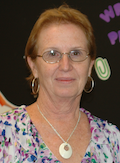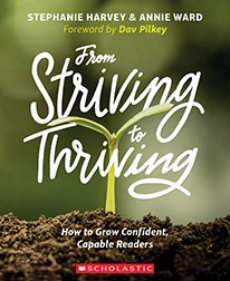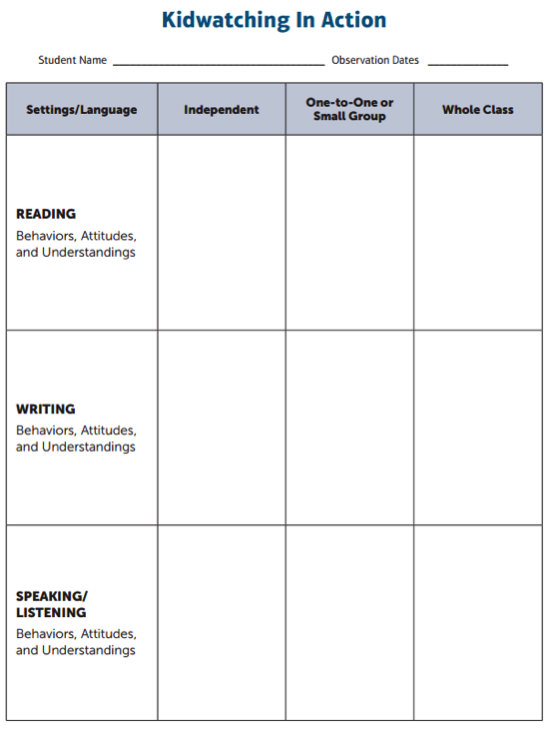Helping Striving Readers Become Thriving Readers
From Striving to Thriving: How to Grow Confident, Capable Readers
By Stephanie Harvey and Annie Ward
(Scholastic, 2017 – Learn more)

“Let us remember: One book, one pen, and one teacher can change the world.” – Malala Yousafzai
As educators we know that children love to read when they have choice, time to read, teachers who believe in them, and people who encourage readers. Research supports this. Our gut feeling reaffirms this. So, why are we still reading from basal readers? Why are children compelled to read at a specific reading level based on how a standardized reading test labels them? Why?

After silently counting to ten, I asked him what book he wanted to read. “Harry Potter.” (That was the “in book” at that time.)
Harry Potter it was. I paired him with another student who was a Harry Potter fan, and off they went. They read to each other, read silently, had their parents read with them. Hence, a friendship began and a Harry Potter Book Club started. (And I couldn’t keep the book on the shelf! Thank you, Scholastic!)
From what doesn’t work to what does
The authors of From Striving to Thriving: How to Grow Confident, Capable Readers had me in tears as I began to read this book:
Systems of text-gradient leveling may stamp strivers with the label of a level…strivers may miss out on the classroom community building that stems from a shared reading experience…Children also need to understand that reading is thinking and should sound like language. If it doesn’t, and the text becomes a grab bag of words on a page, that’s a signal that something has gone awry, and they need to call up their strategies to regain meaning.” (P. 11)
How many other students were denied the pleasure of reading because they were classified as an “L” or “M” reader? Where were the strategies that should have been in place during their Readers Workshop to help them before the words became garbled on a page?
I don’t want to sound preachy because that is not what this book is about. The authors understand that teachers are bound by curriculum and often a lack of resources. This book is here to support teachers in their quest to give the best possible teaching experience their students can receive.
Lots of easily integrated ideas
What I love about teaching reading is that I have learned more about myself as a reader and how to become a better reader. The structure of this book is very easy to follow and jammed full of ideas that can be easily integrated into classrooms all over. There are 51 pages of lessons and materials to supplement the chapters, as well as an online link to videos that show teachers implementing these practices within the classroom.
From Striving to Thriving: How to Grow Confident, Capable Readers is divided into three parts:
- Trust: trust yourself to make wise decisions for your students thorough data and your ability to make wise, informed decisions.
- Teach: remember that effective teaching takes place through research and assessment.
- Transform: believe in the transformative power of reading and the joy that your students will experience once they discover “what reading’s all about.”
Each chapter is divided into several parts:
- A vignette
- Research – three studies or bodies of work that support the chapter
- Actions – strategies that you can use to make an immediate difference
- Assessing the reader in the round (ARR) – questions to guide your teaching (Self, kid watching, and conferring)
As I sat in my favorite coffee shop and continued to read the book, I was transported into many classes throughout the United States. The ideas that the authors give have been tested by teachers just like you. What exemplary teachers we have! What role models for our students!
I learned about the teacher who aroused the curiosity of her students by coming in one day and simply stating, “The birds are back.” Did that prompt your curiosity? It prompted her students to wonder, ask questions, and research. She got them to read!
The importance of classroom libraries
I have to admit that getting through Chapter 3, “Ensure Access to and Choice of Books,” was one of the most difficult chapters I have read in a while. It wasn’t because of the difficulty of text or that it just wasn’t interesting – it was TOO interesting.
The authors pointed out the need to build and maintain classroom libraries or as Stephanie Harvey has coined the phrase, “the beating hearts of a school.” I couldn’t agree with them more. The problem was that I wanted to purchase all the books they recommended: how-to books, infographic books, joke books, interactive books, series books, graphic novels, wordless books.
I never thought I’d recommend reading a professional book with a box of tissues by your side. However, if you tend to get sentimental or just love your job so much, I’d bring the extra soft tissue box with you as you read this book. It is one of the most personal, yet extremely professional, books that I have read. The stories about actual classrooms and data brought a tear to my eyes.
Facts we need to change
There are facts within the book that I can’t get out of my mind. One of them is “One-third of children ages 6-17 (33 percent) say their class has a designated time during the school day to read a book of choice independently, but only 17 percent do this every or almost every school day.” (The Scholastic Kids and Family Reading Report, 2017). Can you imagine that?
If you want to change these numbers, please read this book. If you want ideas on how to incorporate reading strategies into your classroom while having fun (you, as well as the students), read this book. If you want ideas to help transform your striving reader into a thriving reader, please, please read this book.
This book is about reaching the reader who hasn’t made that positive connection with reading. As an educator, you will grow as well. Your toolbox will be filled to the brim with ideas that you can use the next day and every day. You will soon have your own book of examples of how you have changed and will continue to change the lives of your students.
_______________
A year into her retirement from teaching fourth graders, Linda Biondi is currently supervising preservice and student teachers at Rider University. This summer she will be co-facilitating a weeklong writing institute in conjunction with the National Writing Project at Rider. She volunteers for two service organizations: Homefront and Dress for Success of Central New Jersey – both organizations that have a mission to end poverty and homelessness. The mission of Dress for Success is to empower women to achieve with economic independence.


































